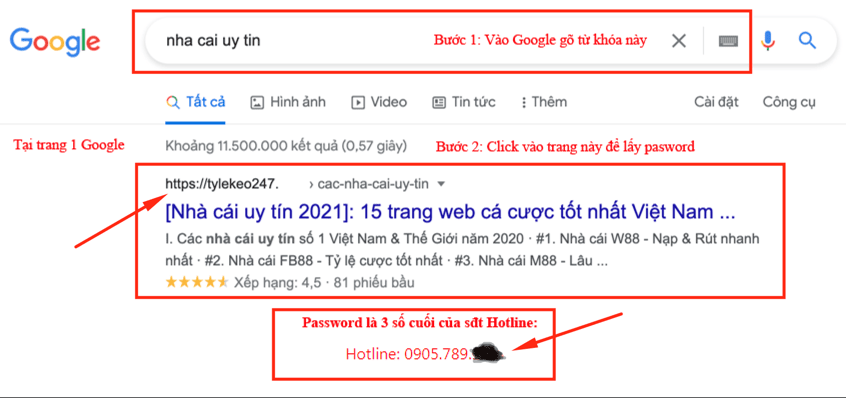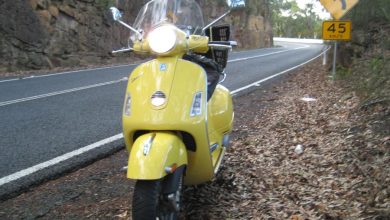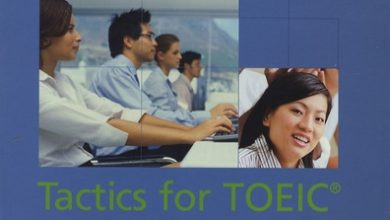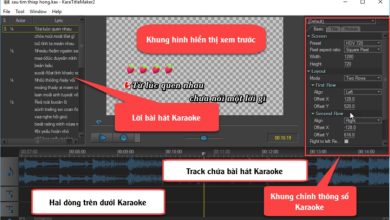Passive Voice: Tất cả cấu trúc và các dạng đặc biệt – Kiến Thức Tiếng Anh
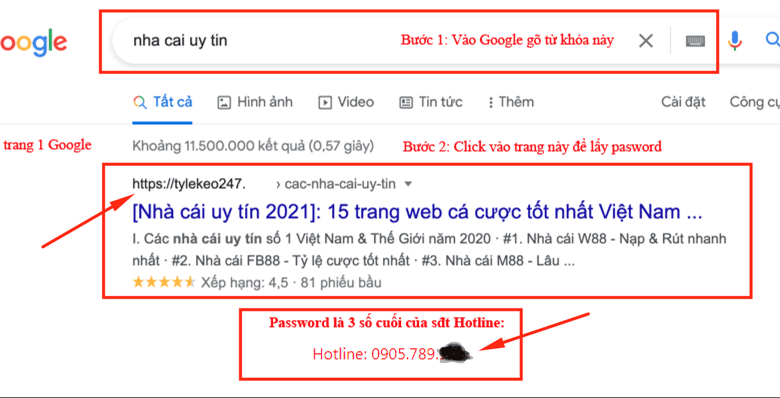
Hôm nay, Kienthuctienganh xin phép được giới thiệu đến các bạn một điểm ngữ pháp cực kỳ trọng yếu trong chương trình học phổ thông cũng như các kì thi tuyển sinh, đại học và nhất là thường xuyên xuất hiện trong các kì xác minh IELTS hay TOEIC, đó chính là Câu thụ động. Vậy câu thụ động là gì? Tất cả chúng ta cùng nhau giải đáp toàn bộ lý thuyết, công thức kèm theo phần bài tập thực hành trong nội dung này nhé.
Table of Contents
I. Định Nghĩa
1. Câu chủ động
Câu chủ động là câu được sử dụng khi chủ thể thực hiện hành động thúc đẩy vào người hay vật khác.
Ex: I am making a cake. (Tôi đang làm bánh.)
Chủ thể ở đây là “I” và chủ thể này đang tự thực hiện một hành động là “make a cake”.
Công thức chung:
S + V + O
Trong số đó:
S: chủ ngữ
V: động từ
O: tân ngữ
2. Câu thụ động
Câu thụ động là câu mà trong đó chủ thể không thực hiện hành động mà trái lại bị thúc đẩy lên bởi một yếu tố khác.
Ex: The room was cleaned. (Căn phòng đã được dọn sạch.)
Chủ thể ở đây là “the room” không thể tự dọn dẹp được mà phải là được ai đó dọn dẹp.
Công thức chung:
BE + V3/ed
Trong số đó:
Be: được chia theo các thì khác nhau.
II. Cách chuyển câu chủ động sang câu thụ động
S + V + O
S + be + V3/ed + by O
Tất cả chúng ta cùng xét 1 ví dụ cụ thể sau đây:
They sell bread here.
Trong số đó:
Chủ ngữ (S): They
Động từ (V): sell
Tân ngữ (O): bread
Bước 1: Tân ngữ của câu chủ động quản lý ngữ trong câu thụ động
They sell bread here
→ Bread is sold here
Tân ngữ của câu chủ động là “bread” hiện thời đã trở thành chủ ngữ trong câu thụ động.
Bước 2: Chia động từ cho câu thụ động theo các thì khác nhau
Tense (Thì)
Active (Chủ động)
Passive (Thụ động)
Thì hiện tại đơn (Simple Present)
S + V(s/es) + O
Ex: They sell bread here.
S + am/is/are + V3/ed + (by + O)
Ex: Bread is sold here (by them).
Thì hiện tại tiếp diễn (Present Continuous)
S + am/is/are + V_ing + O
Ex: They are selling bread here.
S + am/is/are + being + V3/ed + (by + O)
Ex: Bread is being sold here (by them).
Thì hiện tại hoàn thiện (Present Perfect)
S + has/have + V3/ed + O
Ex: They have sold bread here.
S + has/have + been + V3/ed + (by + O)
Ex: Bread has been sold here (by them).
Thì hiện tại hoàn thiện tiếp diễn (Present Perfect Continuous)
S + have/has + been + V_ing + O
Ex: They have been selling bread here.
S + have/ has + been + being + V3/ed +(by + O)
Ex: Bread has been being sold here (by them).
Thì quá khứ đơn (Simple Past)
S + V2/ed + O
Ex: They sold bread here.
S + was/were + V3/ed + (by + O)
Ex: Bread was sold here (by them).
Thì quá khứ tiếp diễn (Past Continuous)
S + was/were + V_ing + O
Ex: They were selling bread here.
S + was/were + being + V3/ed + (by + O)
Ex: Bread was being sold here (by them).
Thì quá khứ hoàn thiện (Past Perfect)
S + had + V3/ed + O
Ex: They had sold bread here.
S + had + been + V3/ed + (by + O)
Ex: Bread had been sold here (by them).
Thì quá khứ hoàn thiện tiếp diễn (Past Perfect Continuous)
S + had + been + V_ing + O
Ex: They had been selling bread here.
S + had + been + being + V3/ed + (by + O)
Ex: Bread had been being sold here (by them).
Thì tương lai đơn (Simple Future)
S + will/shall + V_inf + O
Ex: They will sell bread here.
S + will + be + V3/ed + (by + O)
Ex: Bread will be sold here (by them).
Thì tương lai tiếp diễn (Future Continuous)
S + will + be + V_ing + O
Ex: They will be selling here.
S + will + be + being + V3/ed + (by + O)
Ex: Bread will be being sold here (by them).
Thì tương lai hoàn thiện (Future Perfect)
S + will/shall + have + V3/ed + O
Ex: They will have sold bread here.
S + will + have + been + V3/ed + (by + O)
Ex: Bread will have been sold (by them).
Thì tương lai hoàn thiện tiếp diễn (Future Perfect Continuous)
S + will + have been + V_ing + O
Ex: They will have been selling bread here.
S + will + have + been + being + V3/ed + (by + O)
Ex: Bread will have been being sold here (by them).
Thì tương lai gần (Near Future)
S + am/is/are + going to + V + O
Ex: They are going to sell bread here.
S + am/is/are + going to + be + V3/ed + (by + O)
Ex: Bread is going to be sold (by them).
Động từ khiếm khuyết (Model Verbs)
S + must/ should/ can/ may + V_inf+ O
Ex: They should sell bread here.
S + must/ should/ can/ may + be + V3/ed + (by + O)
Ex: Bread should be sold here (by them).
Have to/ Has to
S + have/ has to + V_inf + O
Ex: They have to sell bread here.
S + have/ has to + be + V3/ed + (by + O)
Ex: Bread has to be sold (by them).
Bước 3: Chuyển chủ ngữ trong câu chủ động thành “by + tân ngữ” trong thụ động
Lưu ý:
Ex: They mended this street.
→ This street was mended.
Bước 4: Vị trí của trạng ngữ trong câu thụ động
-
Nơi chốn + BY + Thời gian
Ex: Mr Xuan built this house in Ca Mau in 2000.
→ This house was built in Ca Mau by Mr Xuan in 2000.
Bước 5: Nếu có “No” đầu câu thì làm như bình thường, xong đổi sang phủ định
Ex: Nobody visited Lan.
→ Lan wasn’t visited.
III. Cách chuyển thụ động dạng thắc mắc
1. Thắc mắc YES/NO
2. Thắc mắc WH-
3. Dạng thắc mắc WH- là tân ngữ, có động từ đặc biệt
4. Dạng thắc mắc WH- là chủ ngữ
IV. Các dạng đặc biệt của câu thụ động
1. Thụ động kép (Double passive)
2. Câu thụ động với các động từ chỉ ý kiến, ý kiến
Các động từ chỉ ý kiến, ý kiến là: say/ think/ believe/ report/ consider…
Chủ động
People/ they + say/think/believe… + (that) + S + V
Thụ động
Cách 1: It is/was said…….. that + S + V
Cách 2: S + am/is/are/was/were + said +
to_V + O (cùng thì)
to have + V3/ed + O (trước thì)
Ex: – People said that he was nice to his friends.
Cách 1: It was said that he was nice to his friends.
Cách 2: Vì 2 mệnh đề “People said” và “he was nice to his friends” cùng thì quá khứ nên ta sẽ có giải đáp là:
->He was said to be nice to his friends.
– People said that he had been nice to his friends.
Cách 1: It was said that he had been nice to his friends.
Cách 2: Vì mệnh đề “He had been nice to his friends” trước thì mệnh đề “he was nice to his friends” (said là thì quá khứ đơn nhưng had been là quá khứ hoàn thiện) nên ta sẽ có giải đáp là:
->He was said to have been nice to his friends.
3. Câu thụ động với các động từ tri giác
Các động từ chỉ tri giác là: see, hear, notice, feel…
4. Câu thụ động với động từ “Let”
5. Câu thụ động có 2 tân ngữ: Tân ngữ trực tiếp – chỉ vật, tân ngữ gián tiếp – chỉ người
So với câu thụ động có 2 tân ngữ, tất cả chúng ta sẽ có 2 cách làm. Ngoài ra ta cần thêm các giới từ “to” hoặc “for” trước tân ngữ khi chuyển sang câu thụ động.
Ví dụ 1: My mother gives me a cake.
Trong số đó:
Tân ngữ 1 là “me”
Tân ngữ 2 là “a cake”
→ I am given a cake by my mother.
→ A cake is given to me by my mother.
Ví dụ 2: My mother makes me a cake.
→ I am made a cake by my mother.
→ A cake is made for me by my mother.
6. Câu thụ động với cấu trúc: S + V + O + V_ing
Trong số đó, động từ chính (V) thường là: Keep, remember, find, see….
Ví dụ:
– She kept me waiting.
→ I was kept waiting
– They saw the thief climbing over the wall.
→ The thief was seen climbing over the wall.
7. Câu thụ động với [thể nhờ bảo] have/get
Câu chủ động
S + have + sb + V_inf + sth
S + get + sb + to_V + sth
Câu thụ động
S + have/get + sth + V3/ed + (by + sb)
Ví dụ:
– I have the mechanic fix my car.
→ I have my car fixed by the mechanic
– My mother gets me to wash the dishes.
→ I get the dishes washed by my mother.
8. Câu thụ động với cấu trúc “would like”
Would like/ would love + To_inf + O
Would like/ would love + sb + To_inf + O
Ví dụ:
– I would like to give Mary a nice present.
→ I would like Mary to be given a present.
– I would love someone to take me out to dinner.
→ I would love to be taken out to dinner.
9. Câu thụ động với NEED/ WANT
Something + need/ want + V_ing/ to be V3/ed : mang nghĩa thụ động
Ví dụ:
Your hair needs cutting = Your hair need to be cut.
(Tóc bạn cần được cắt)
The garden wants to be weeding = The garden wants weeding.
(Mảnh vườn cần được làm cỏ)
10. Câu thụ động với Gerund (V_ing)
Các gerund theo sau một số động từ như advise, suggest, recommend… được thay bằng “should be V3/ed” trong câu thụ động.
Ví dụ:
They advised employing part time workers
→ They advised that part time workers should be employed
11. Câu thụ động với cấu trúc: It’s one’s duty to V_inf
Câu chủ động
It’s one’s duty to_V (Đó là nhiệm vụ của ai để làm gì)
Câu thụ động
S + be + supposed + to_V
Ví dụ:
It’s your duty to do this work.
→ You are supposed to do this work.
12. Câu thụ động với cấu trúc: It’s impossible + to do sth
Câu chủ động
It’s impossible + to do sth (Không thể làm gì)
Câu thụ động
S + can’t + be + V3/ed
Ví dụ:
It is impossible to repair that machine.
→ That machine can’t be repaired
13. Câu thụ động với các động từ: Crowd, fill, cover
So với các động từ crowd, fill, cover thì ta dùng “with” thay cho “by“
Ví dụ:
Clouds cover the sky.
→ The sky is covered with clouds.
14. Một số nội động từ vẫn có hình thức thụ động. Trong trường hợp này động từ phải đi kèm với giới từ
Ví dụ:
– The Queen slept in this bed.
→ This bed was slept in by the Queen.
– Someone will care for her children while she is away.
→ Her children will be cared for while she is away.
15. Câu thụ động với MAKE
Trong câu chủ động, theo sau động từ MAKE là động từ nguyên mẫu V_inf thì trong câu thụ động sẽ chuyển thành To_inf.
Ví dụ:
They made me go.
→ I was made to go.
V. Bài tập
Exercise 1: Choose the best answer:
1. We can’t go along here because the road……………………
A. is repairing B. is repaired C. is being repaired D. repairs
2. The story I’ve just read……………….Agatha Christie.
A. was written B. was written by C. was written from D. wrote by
3. I’m going to go out and………………………………………….
A. have cut my hair B. have my hair cut C. cut my hair D. my hair be cut
4. Something funny ………………………in class yesterday.
A. happened B. was happened C. happens D. is happened
5. Many US automobiles……………………in Detroit, Michigan.
A. manufacture B. have manufactured C. are manufactured D. are manufacturing
6. A lot of pesticide residue can…………………………………..unwashed produce.
A. find B. found C. be finding D. be found
7. We………………by a loud noise during the night.
A. woke up B. are woken up C. were woken up D. were waking up
8. Some film stars……………….difficult to work with.
A. are said be B. are said to be C. say to be D. said to be
9. Why did Tom keep making jokes about me? – I don’t enjoy……………………at.
A. be laughed B. to be laughed C. laughing D. being laughed
10. Today, many serious childhood diseases………………………by early immunization.
A. are preventing B. can prevent C. prevent D. can be prevented
11. Do you get your heating……………………..every year?
A. checking B. test C. be checked D. checked
12. Bicycles…………………..in the driveway.
A. must not leave B. must not be leaving C. must not be left D. must not have left
13. Beethoven’s Fifth Symphony…………………..next weekend.
A. is going to be performed B. has been performed C. will be performing D. will have perform
14. All bottles………………………………..before transportation.
A. frozen B. were froze C. were frozen D. are froze
15. ………………………………………..yet?
A. Have the letters been typed B. Have been the letters typed C. Have the letters typed D. Had the letters typed
16. English has become a second language in countries like India, Nigeria or Singapore where……………..for administration, broadcasting and education.
A. is used B. it is used C. used D. being used
17. The telephones…………..by Alexander Graham Bell.
A. is invented B. is inventing C. invented D. was invented
18. Lots of houses……………….by the earthquake.
A. are destroying B. destroyed C. were destroyed D. is destroyed
19. Gold…………………….in California in the 19th century.
A. was discovered B. has been discovered C. was discover D. they discover
20. The preparation…………………..by the time the guest……………………….
A. had been finished- arrived B. have finished- arrived C. had finished-were arriving D. have been finished- were arrived
21. The boy…………………….by the teacher yesterday.
A. punish B. punished C. punishing D. was punished
22. “Ms Jones, please type those letters before noon”_ “They’ve already………………, sir. They’re on your desk.”
A. typed B. been being typed C. being typed D. been typed
23. Sarah is wearing a blouse. It………………….of cotton.
A. be made B. are made C. is made D. made
24. They had a boy………………….. that yesterday.
A. done B. to do C. did D. do
25. We got our mail ………………..yesterday.
A. been delivered B. delivered C. delivering D. to deliver
26. James……..the news as soon as possible.
A. should tell B. should be told C. should told D. should be telled
27. My wedding ring …………………. yellow and white gold.
A. is made B. is making C. made D. make
28. Mr. Wilson is………………… as Willie to his friend.
A. known B. knew C. is known D. know
29. References …………………….in the examination room.
A. not are used B. is not used C. didn’t used D. are not used
30. Laura ………………….in Boston.
A. are born B. were born C. was born D. born
31. His car needs …………………..
A. be fixed B. fixing C. to be fixing D. fixed
32. Her watch needs …………………..
A. repairing B. to be repaired C. repaired D. A and B
33. My mother is going …………………….. this house.
A. sold B. sell C. to be sold D. to sell
34. There’s somebody behind us. I think we are ………………………..
A. being followed B. are followed C. follow D. following
35. Have you………………….. by a dog?
A. bite B. bit C. ever been bitten D. ever been bit
36. The room is being ……………………….at the moment.
A. was cleaned B. cleaned C. cleaning D. clean
37. It …………………..that the strike will end soon.
A. is expected B. expected C. are expected D. was expected
38. It is …………………..that many people are homeless after the floods.
A. was reported B. reports C. reported D. reporting
39. He was said ……………….. this building.
A. designing B. to have designed C. to thiết kế D. designed
40. Ted ……………………..by a bee while he was sitting in the garden.
A. got sting B. got stung C. get stung D. gets stung
Exercise 2: Choose the correct answer to complete the sentences.
1. America __________ By Columbus in 1492.
A. are discovered B. were discovering C. is discovered D. was discovered
2. Parrots and crows __________ the most intelligent birds.
A. were considering B. are considered C. Considered D. was considered
3. I still can’t believe! My bicycle__________ last night.
A. was stolen B. was stealing C. were stolen D. stole
4. Mary traffic accidents __________ by dangerous driving.
A. cause B. caused C. are caused D. which are caused.
5. Many US automobiles __________ in Detroit, Michigan.
A. manufacture B. are manufactured C. have manufactured D. are manufacturing
6. Grass __________ by fat cows on the green meadow.
A. are eaten B. was being eaten C. were being eat D. was been eaten
7. So much progress __________ that there may be space-frights to Mars.
A. is being made B. are being made C. will be made D. will being made
8. Many people believe we can look forward to the day when even our household jobs like cleaning and decorating__________ by computer-control robots.
A. will be doing B. are being done C. would be done D. will be done.
9. English __________ since 2002.
A. have been learned B. has been learnt C. has to learn D. have to learn
10. Your bill should __________ before you leave the hotel.
A. be paid B. is paid C. are paid D. was paid
Exercise 3: Change these sentences into Passive voice
1. My father waters this flower every morning.
2. John invited Fiona to his birthday party last night.
3. Her mother is preparing the dinner in the kitchen.
4. We should clean our teeth twice a day.
5. Our teachers have explained the English grammar.
6. Some drunk drivers caused the accident in this city.
7. Tom will visit his parents next month.
8. The manager didn’t phone the secretary this morning.
9. Did Mary this beautiful dress?
10. I won’t hang these old pictures in the living room.
11. The German didn’t build this factory during the Second World War.
12. The Greens are going to paint this house and these cars for Christmas Day.
13. Ann had fed the cats before she went to the cinema.
14. The students have discussed the pollution problems since last week.
15. Have the thieves stolen the most valuable painting in the national museum?
16. Some people will interview the new president on TV.
17. How many languages do they speak in Canada?
18. Are you going to repair those shoes?
19. He has broken his nose in a football match.
20. Have you finished the above sentences?
Exercise 4: Change these sentences into Passive voice
1. The waiter brings me this dish.
2. Our friends send these postcards to us.
3. Their grandmother told them this story when they visited her last week.
4. Tim ordered this train ticket for his mother.
5. You didn’t show me the special cameras.
6. She showed her ticket to the airline agent.
7. He lends his friend his new shoes.
8. She left her relatives five million pounds.
9. The shop assistant handed these boxes to the customer.
10. The board awarded the first prize to the reporter.
11. Have you sent the Christmas cards to your family?
12. The committee appointed Alice secretary for the meeting.
13. He hides the broken cup in the drawer.
14. They keep this room tidy all the time.
15. They all voted the party a great success.
16. We gave Ann some bananas and some flowers.
17. They moved the fridge into the living room.
18. She bought some cups of tea to the visitors in the next room.
19. They find the new project worthless.
20. The secretary didn’t take the note to the manager.
Exercise 5: Change these sentences into Passive voice
1. They will finish their work next week
2. The fire has caused considerable damage
3. The police were following the suspects
4. We’re going to give David a pig surprise
5. I think Alfred Nobel invented dynamite
6. Your hair is long, you ought to get it cut
7. Keep silent
8. Open your book
9. They made him work all day
10. Police advise drivers to use an alternative route
VI. Giải đáp
Exercise 1: Choose the best answer
Nhập password để xem tiếp nội dung
Vui lòng nhập mật khẩu xác thực người dùng vào ô bên dưới để xem tiếp nội dung:
Password:
Hướng dẫn lấy password để xem tiếp nội dung:
